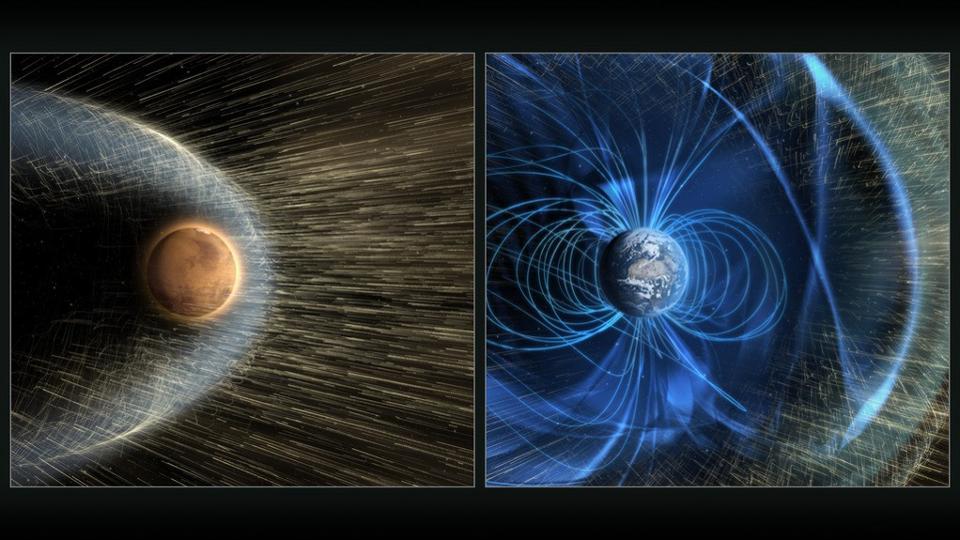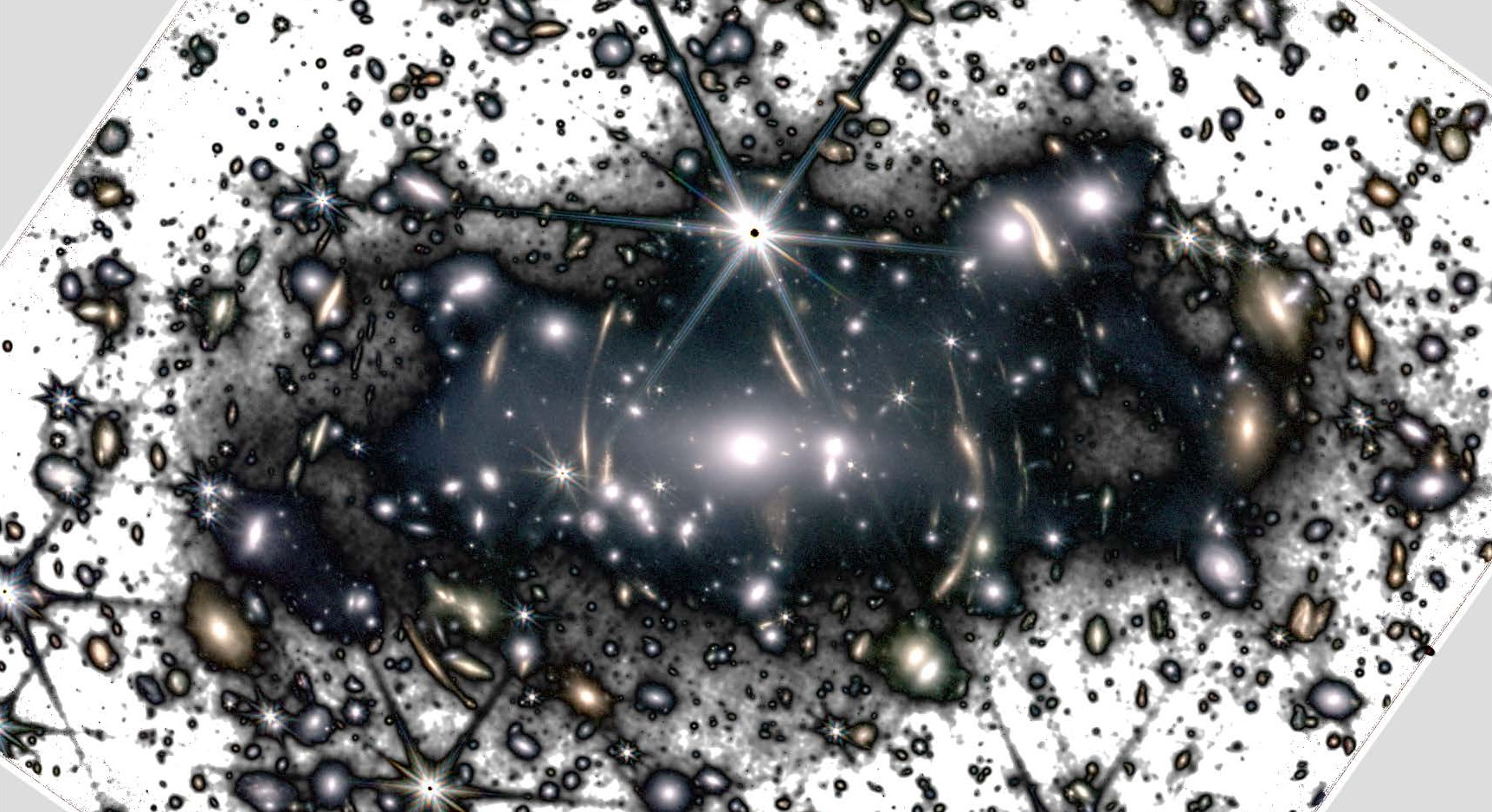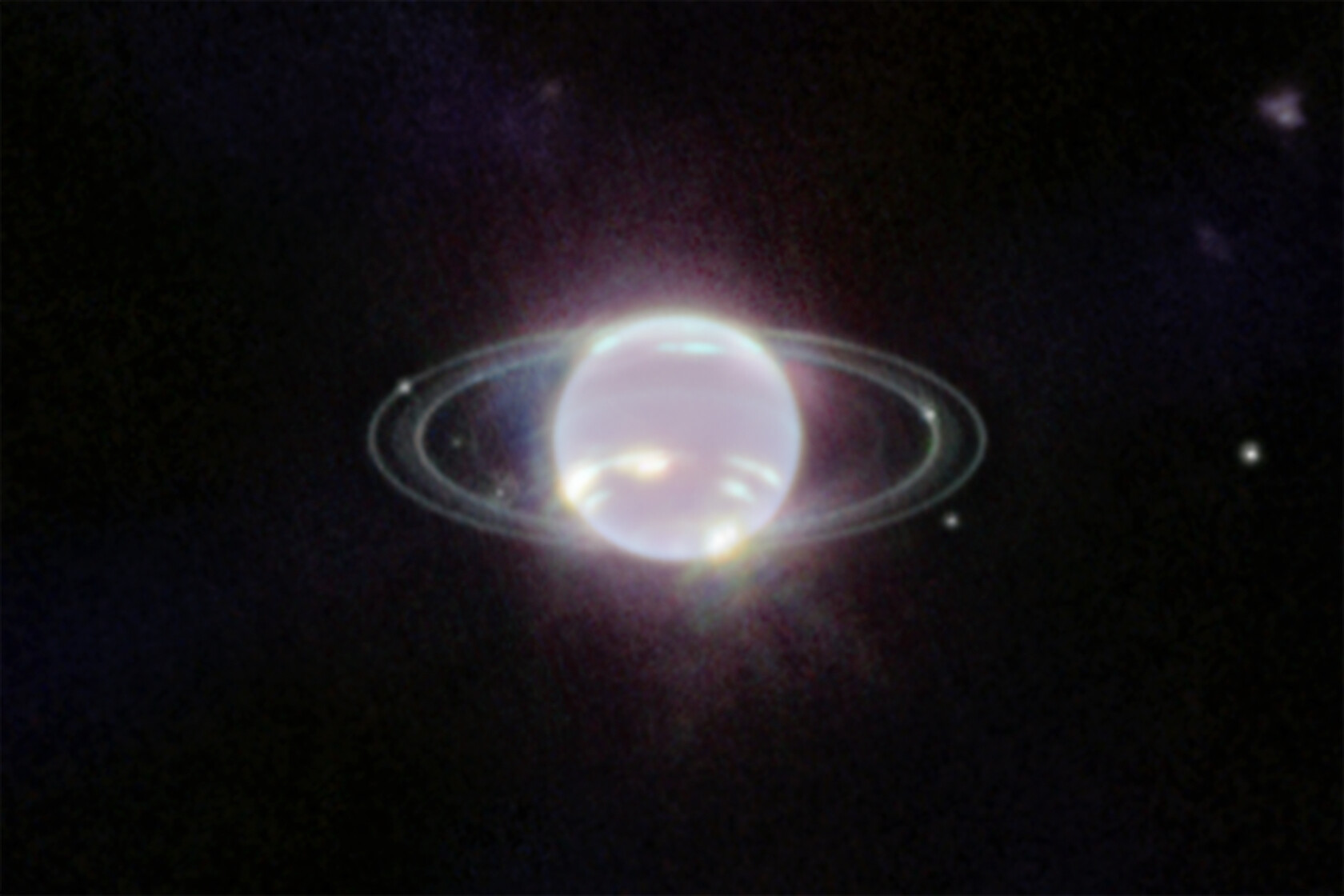No atmosphere found on JWST’s first Earth-sized exoplanet

- In a remarkable "first" for the new telescope, JWST detected an exoplanet transiting in front of its host star.
- Known as LHS 475 b, it's the size of Earth, orbiting its cool red dwarf star very rapidly and transiting across its parent star's face.
- Despite the incredible power and sensitivity of JWST, no atmosphere was revealed during the transit, compelling us to look elsewhere for our cosmic answers.
For many of us, when we turn our eyes skyward, we imagine much, much more than the stars, galaxies, and the expanse of empty space that separates them. Instead, we turn our thoughts to the worlds that orbit each one of those stars: massive, gas giant planets with their own rich systems of moons, planets with solid surfaces like the Earth, Venus, Mars, and Mercury, and planets in between those two, like the so-called super-Earths that are almost exclusively more like mini-Neptunes. Each world in the Universe is unique, with its own composition, formation history, and possibilities for what sort of chemical or even biological reactions might occur there.
For the very first time, one of those planets within our Universe was discovered by the James Webb Space Telescope (JWST): LHS 475 b. This planet happens to be almost identical in size to Earth, with its radius determined to be 99% as large as our home planet’s. Although it’s in a fairly close, tight orbit around its parent star, that star is relatively cool: an old, stable, red dwarf star. As the planet — serendipitously aligned with its parent star from our perspective — transited across the face of its star, JWST got a chance to observe it, using the technique of transit spectroscopy to measure its atmospheric contents. But what it found was instead a disappointment, consistent with there being no atmosphere at all. It’s a remarkable step forward for science, but also, one that suggests that JWST’s “nightmare scenario” for exoplanet discovery might come true.

Let’s back up for a minute, and talk about what a “dream scenario” for JWST would be. Out there in the Universe, there are more planets than stars, with almost every star that forms late enough in the game — from material that’s been sufficiently enriched by prior generations of stars — containing multiple planets of various sizes and orbital distances around it. When those planets happen to orbit around their stars in an orientation where the planet passes directly in front of the star (from our perspective), a portion of the star’s light is blocked, causing the star to temporarily become dimmer during these planetary transits.
But while the solid disk of the planet simply obscures the starlight that strikes it, planets can also possess atmospheres: partially opaque but partially transparent to the incident starlight. As the starlight filters through that planetary atmosphere, the molecules and atoms present absorb light of particular wavelengths: the wavelengths that excite the electrons within those atoms and molecules. As a result, when we break up the light we receive spectroscopically — into its individual wavelengths — we can detect absorption lines, teaching us what’s present in the atmosphere thanks to the technique of transit spectroscopy.

In addition to the known, confirmed exoplanets that are out there, missions that measure planetary transits like Kepler, K2, and TESS also yield thousands of exoplanet candidates: where a one-time or even periodic dimming is seen, but where the signal hasn’t become robust enough to declare a definitive, confirmed detection. One of those planet candidates was known as TOI-910.01, meaning that an event consistent with a transit was seen by the TESS satellite, but that what TESS had seen wasn’t sufficient to declare a true discovery. It still might have been a false positive.
That’s when another observatory has a chance to come in and look for a definitive signal. For the very first time, JWST was that observatory in this case, examining the parent star — known either as TOI-910 (from its TESS number) or LHS 475 (its more common name) — and detecting that critical dimming effect. Even though only about 0.1% of the parent star’s light was blocked, JWST was able to detect that signal unambiguously, detecting two transits lasting about 40 minutes long, observing the clear dip in flux with a series of observations that broke the data up into ~9 second chunks.

It’s really an unambiguous signal; there’s no doubt the planet is there. This marks the very first exoplanet officially discovered by JWST, and the stats on what it discovered truly do showcase the power of JWST to do a whole lot more planet-finding and planet-characterization in the future. The new exoplanet, officially named LHS 475 b, is:
- 99% the radius of Earth, with just a 0.5% uncertainty,
- located 40.7 light-years away, placing it relatively close by,
- orbiting around a cool, red star that’s middle-aged, non-flaring, and stable in its brightness,
- and capable of having transit spectroscopy performing on it by JWST’s NIRSpec instrument.
Being able to perform transit spectroscopy leads to a series of tantalizing possibilities. As light filters through a ring-like region surrounding the planet, it can stimulate both emission and absorption features dependent on what sorts of material is present and what its properties are. Venus, Earth, Titan, and Mars — were they to transit across the face of a star like LHS 475 — would all lead to different signals, all of which in principle would be revealed to a sensitive enough observatory.

A Venusian atmosphere would be very rich in clouds, which would serve as an extremely opaque medium, perhaps indistinguishable from a solid planet. However, the components of atmosphere where there are either breaks in the clouds (or incomplete cover) or that are above the clouds would still lead to interesting signals. Earth’s signal would display a reddening as well as oxygen, nitrogen, and water vapor signatures, while Titan’s methane and hazes would be extremely easy to see. Mars, however, with a thin carbon dioxide atmosphere and a tiny bit of nitrogen, would create a very small signal, requiring a very large amount of observing time and a high signal-to-noise ratio.
But if the planet that transited across the star was instead like the Moon or Mercury — with no atmosphere at all — performing transit spectroscopy would lead to the most boring spectrum of all: one that was entirely flat. And when the spectrum of LHS 475 b was taken by JWST’s NIRSpec instrument, that’s precisely what it observed: a spectrum that was 100% consistent with being purely flat, with many possible other outcomes, like a hydrogen-rich or nitrogen-rich or even a methane-rich atmosphere all being disfavored by the data.

Despite our hopes that the Earth-sized planets we’d be finding with JWST would possess a rich and diverse set of atmospheres, this very first one delivered exactly the opposite result: the same result you’d get if this were a completely atmosphere-free world, or just a sphere of solid material orbiting around the star LHS 475. The observations rule out a wide variety of plausible atmospheres for what could be around this planet; the only realistic atmosphere that could remain is a Mars-like one, thin and very dominated by carbon dioxide.
Technically, this is a very nice result. Prior to JWST, it was only the large, giant planets — the ones practically guaranteed to have large amounts of gas around them — that it was possible to perform transit spectroscopy on. The incredible pristine properties of JWST allowed us to go all the way from Jupiter-sized worlds down to Earth-sized worlds in our quest to measure the contents of exoplanet atmospheres, and to do it successfully. It’s neither the fault of the telescope nor of the researchers that the first JWST-discovered planet just didn’t happen to have an atmosphere.

There are a few possibilities as to why this could be, and while some of the possibilities are rather mundane, the most likely one might indeed be the nightmare scenario. The dream scenario, however — that practically all Earth-sized planets have rich, diverse atmospheres like the two Earth-sized worlds in our own Solar System (Venus and Earth) do — is antithetical to this first result.
The most optimistic possibility remaining that’s worth consideration is that this newly discovered planet, LHS 475 b, really does possess an atmosphere, and that JWST will be able to detect it. The spectrum it was able to obtain was only possible to acquire during the brief moments that the planet transited its star, and with two transits of about 40 minutes, that simply isn’t very much time to acquire the needed signal. In the acquisition of this data, JWST hasn’t yet seen its noise floor appear, so it’s plausible that acquiring more data from subsequently observed transits could yet reveal an atmosphere, and even one that was almost exclusively carbon dioxide would be revolutionary in informing our understanding of planets.

Less optimistically, it could be the case that this particular exoplanet doesn’t have an atmosphere, but that many or even most of the Earth-sized worlds out there — the majority of which are going to be found around low-mass red dwarf stars — actually do. In this scenario, it’s only for reasons similar to why Mercury has no atmosphere that LHS 475 b has no atmosphere: because the planet is too close to its parent star and too low in mass, combined, to have retained the atmosphere after billions of years of being bombarded by radiation and wind particles from the star it orbits.
We have every reason to expect that Earth-sized planets around Sun-like stars should be able to generate and maintain atmospheres, but there’s a huge question of whether this is also possible around red dwarf stars. Red dwarf stars — M-class stars that are generally lower than ~40% the mass of the Sun — tend to rotate rapidly, flare frequently, and will inevitably tidally lock any planets that would be located within or interior to the star’s so-called habitable zone. These are the majority of stars in the Universe that possess the majority of Earth-sized planets in the galaxy and Universe, and these are really harsh conditions.

That’s why the nightmare scenario is, unfortunately, so frighteningly likely. JWST, as wonderful as it is, still has a limited set of capabilities. It’s capable of detecting Earth-sized planets that transit across the face of small stars like red dwarfs, because the planet blocks a significant fraction of the star’s light: something like 0.1%. But if the star is larger — and Sun-like stars are larger — then the fraction of light that an Earth-sized planet will block is much lower, and JWST won’t be able to resolve planets that block something like ~0.01% of their star’s light or less. Earth-sized planets around Sun-sized stars are invisible to JWST.
And so there’s this frightening possibility that, despite its wonderful instruments, JWST might be forced to look at Earth-sized worlds only around red dwarf stars and in relatively tight orbits, and those planets may almost all be airless worlds. It’s not yet known whether an Earth-sized planet that orbits relatively closely to a red dwarf star can keep an atmosphere while being tidally locked to and constantly bombarded by a red dwarf’s winds and radiation.
In other words, the only rocky planets that JWST can successfully perform transit spectroscopy on might fall into the same category: warm, around a red dwarf, tidally locked, and completely airless. In this nightmare scenario, JWST would never successfully detect an Earth-sized planet’s atmosphere.

Fortunately, we’re still at the very beginning of the science of transit spectroscopy around Earth-sized worlds. Many transiting exoplanets around red dwarfs are cool and distant, so even if the nightmare scenario is true for hot planets, the cooler ones might still possess atmospheres. It’s possible that JWST’s noise floor will be low enough that we could perform transit spectroscopy on Earth-sized planets around stars with 0.4-0.6 solar masses, which are more Sun-like and less red dwarf-like. And it’s likely that some red dwarf stars — perhaps even including LHS 475 — are well-behaved enough that they wouldn’t completely strip any planetary atmospheres away.
It’s always tough to draw general conclusions when you’ve only looked at one object, and LHS 475 b is just the first Earth-sized planet discovered and measured with transit spectroscopy using JWST’s NIRSpec instrument. Given that it’s a hot planet around a low-mass red dwarf star, it’s not entirely surprising that we don’t see an atmosphere. But instead of having capabilities that allow JWST to probe the “sweet spot” for atmospheres around Earth-sized planets, it might only be capable of measuring atmospheres around the Earth-sized planets that have no atmospheres at all. It all depends on what the Universe delivers to us: something we won’t know for sure until we have much larger sets of transit spectroscopy data.




